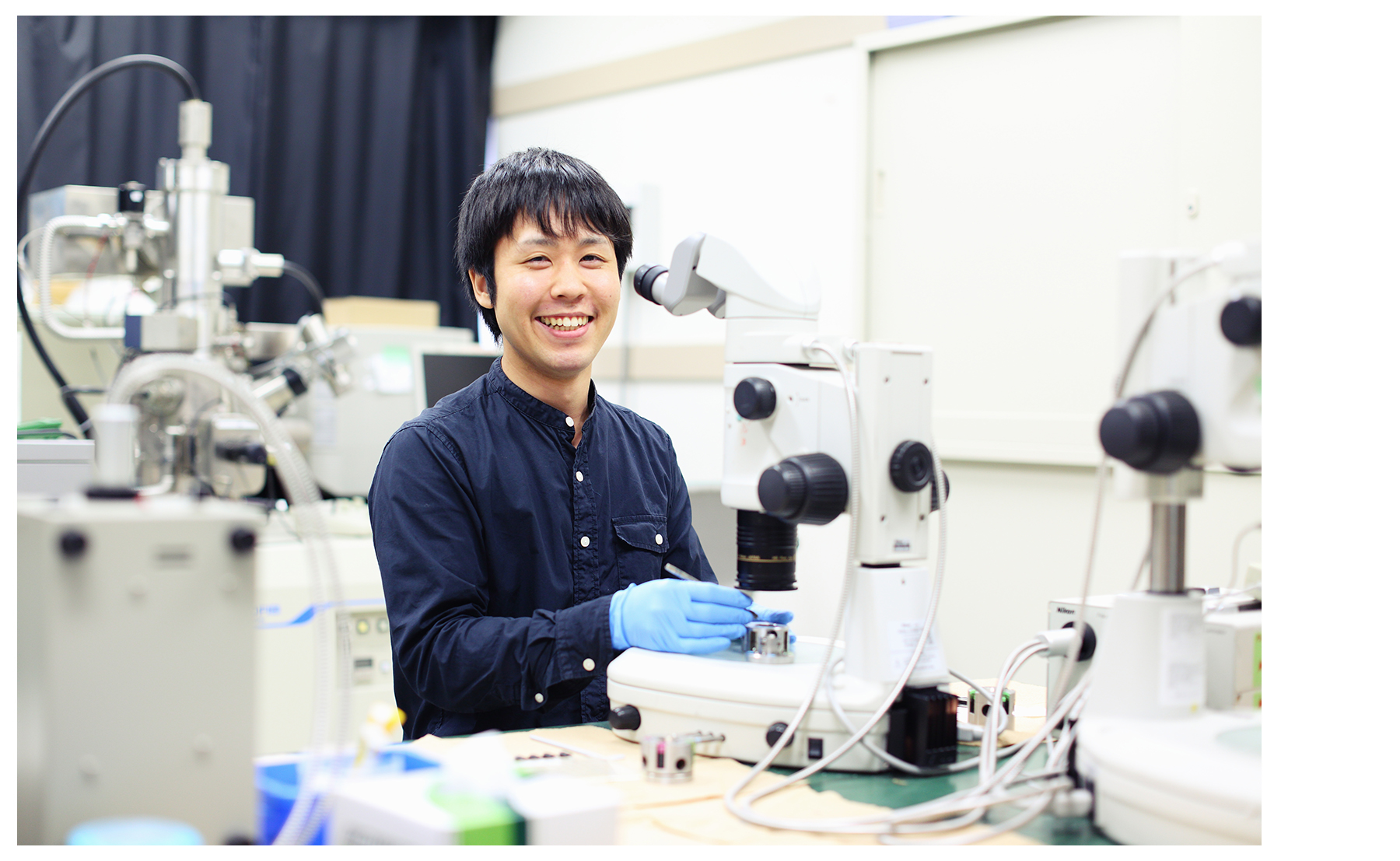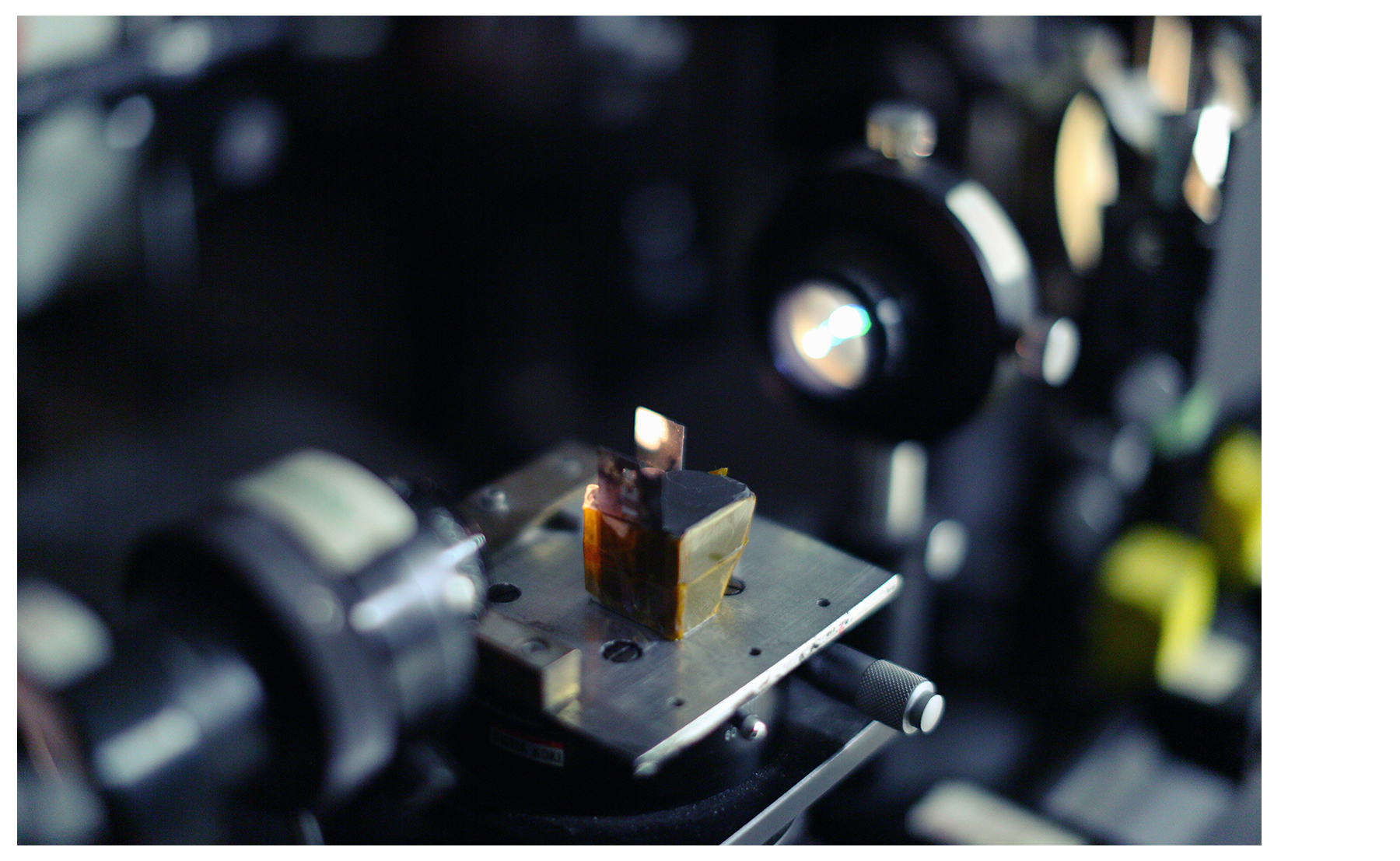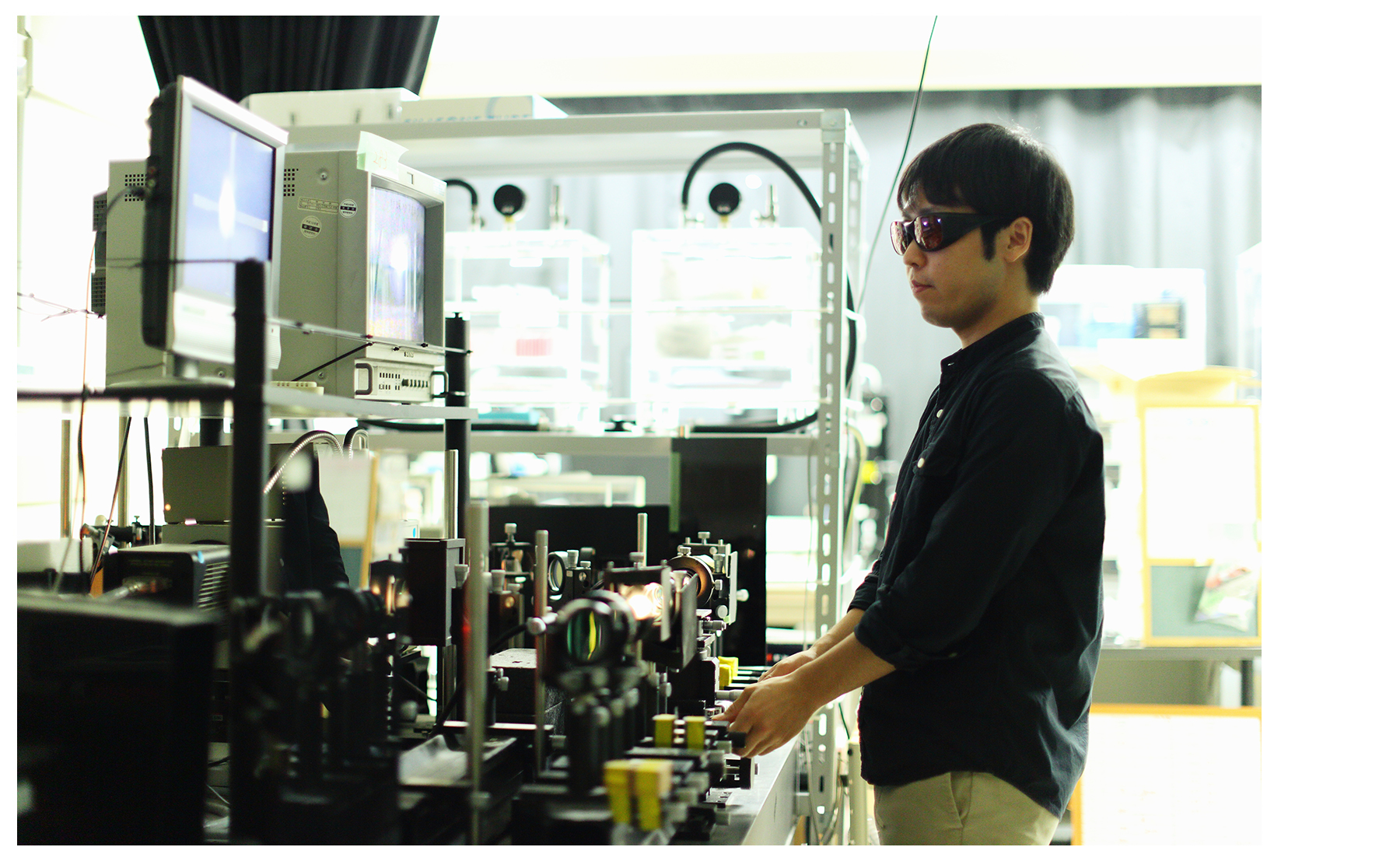I am conducting high-pressure and high-temperature experiments, which represent the interior environment of the Earth. The "high-pressure" and "high-temperature" in the Earth 6400 km deep indicate several or hundreds of giga-pascal (GPa) and a few thousands degrees, respectively. Our experiments aim to represent the environments of deep Earth and to understand the changes of materials there. I have especially engaged to reveal the deep carbon cycles in the Earth.
Carbon plays various roles in both surface and interior of the Earth. This element is necessary for human life because it is a main constituent of essential materials for us such as organic matters and carbon dioxide. Parts of the carbon-bearing materials on surfaces are descended into the Earth's interior with subducting oceanic plates. Descended carbon is contained in deep rocks and helps them to melt. Thus, the carbon triggers magma generations and deep volcanisms. Volcanisms release carbon from the interiors as CO2 gas and the carbon returns to surfaces. Such global carbon cycles from surfaces to interiors of the Earth are possible to be influence on material transfers in the deep parts and changes of the climate compositions. Therefore, the deep carbon cycle is important problem to solve the evolution process of the Earth.
Although the object of my study is very vast, objects of the experiments are so tiny worlds. We are able to generate the above high pressure at smaller areas than several mm’s in diameter. The pressure is defined as (Pressure) = (Force) / (Area), and high pressure is more easily generated by realizing small area than large force. We perform high-pressure and high-temperature experiments using larger oil-press apparatus or smaller compression cells using diamonds. The former one is able to apply larger forces (hundreds or thousands tons) on larger area (several mm’s in diameter). Although the latter one cannot add so large force, it can generate larger maximum pressures than the large press apparatus because it uses hard diamonds to compress so small area (less than 1-mm diameter). Materials under high pressure are heated by using laser or resistance heater, and high-pressure and high-temperature environments are realized.




- Name:Fumiya MAEDA
- Position:3rd year doctoral student in Department of Earth Sciences
- Laboratory:Quantum-beam Earth Science and Technology
- Hometown:Azumino in Nagano
- Research area:Deep Carbon Cycle in the Earth
- Posted Date:Oct 01, 2018
1.What kind of the research are you doing?
2.What is the reason for starting your study?
I have been interested in the deep Earth since I had learned that olivine is one of main constituents composing the Earth. Olivine whose name is derived from 'olive' is a blight green mineral and well-known as a jewel named 'peridot'.
I have become interested in minerals, and collected them or watched them at museums since I was a junior high school student. However, I had poor knowledge about minerals because I did not take geoscience lectures in high school and only gazed at picture books a little. Although I possessed a specimen of olivine, I merely recognized it as a green beautiful mineral.
Lectures in the university taught me that olivine is dominant mineral in the upper mantle and transforms to different structures in deeper regions. I was struck by the fact that the Earth has beautiful domains composed of peridot and more attracted by the different aspect of minerals from its beauty.
I was also excited by the lectures and practices about high-pressure phase transitions of materials. Interested examples are H2O and CO2; they can be solidified under pressure corresponding to insides of the Earth though they are liquid or gas phases on the surfaces. Moreover, pressurized solids of them have different properties from the cooled ices of H2O and CO2 at the ambient pressure. For example, some high-pressure ices of H2O are heavier than water and carbon bonds 4 oxygens in a high-pressure CO2 solid. This knowledge further awakened my interest in the interior worlds of the Earth which cannot be grasped only using the common sense on the Earth's surface.
3.Message for prospective students
One of motivations of my study is to widely extend interesting themes, which can be deeply considered. Small human beings have established various methods in order to investigate the vast Earth, e.g. experiments, calculations, and observations of natural samples or seismic waves. Every study has been performed by using surprising mechanisms, and acquired many fascinating results until now. I hope that these fruits are not only possessed by scientists but also are shared with every Earthling.
Our studies do not always contribute to our lives directly. However, scientists engage themselves in the study of our planet to supply good topics and answer your questions about the Earth. I would be glad if you could remember the existence of such scientific fields and scientists, and would be very happy if you could look forward to further evolutions of the Earth sciences.

